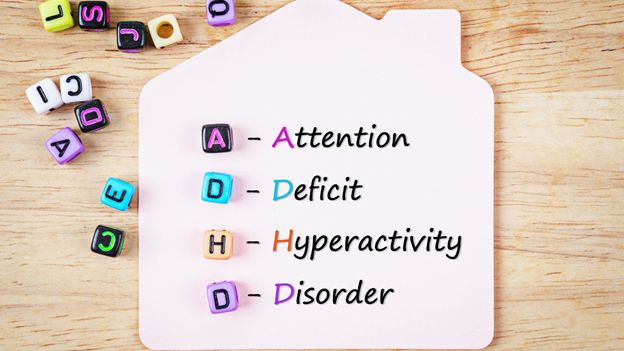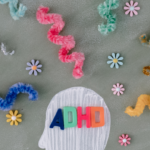The Link Between ADHD and Video Game Addiction

Nearly 10% of children in the United States have attention-deficit hyperactivity disorder (ADHD). That equates to approximately 6 million kids. Another 8.5% of children are addicted to video games. When you take a closer look at the symptoms of ADHD and what video games offer, you can see why video game addiction is common among children with this mental disorder.
In this article, we’ll take a closer look at what ADHD is, its common symptoms, and the relationship it shares with video game addiction.
Content
What is ADHD?

ADHD also referred to as attention-deficit hyperactivity disorder, is one of the most common mental disorders in children but can also affect adults. The main symptoms include the inability to focus (inattention), excessive movements that aren’t appropriate for the setting (hyperactivity), and acting hastily without thinking about the consequences (impulsivity).
Symptoms of ADHD and Diagnosis

Many of the symptoms associated with ADHD like the inability to sit still, limited attention span, and fidgeting are all common behaviors in small children, making diagnosis difficult. The biggest difference between normal adolescent behavior and symptoms of ADHD is that both hyperactivity and inattention are much more noticeable. Additionally, these behaviors cause significant distress at home, at school, or with friends.
There is no formal test for ADHD. A diagnosis is made by a medical professional based on observation and the number of symptoms present over a certain period of time. ADHD is usually diagnosed as one of three types – hyperactive/impulsive, inattentive, or both. Symptoms are observed and must be present for up to six months for a diagnosis to be made. ADHD is often treated using a combination of medication, counseling, and behavioral therapy.
Here’s a quick breakdown of the most common symptoms of each type of ADHD.
Hyperactivity/Impulsivity
- Inability to stay seated/squirming
- Running or climbing in inappropriate places
- Fidgeting with objects or tapping hands and feet
- Inability to perform leisurely activities quietly
- Always “on the go”
- Talking incessantly
- Interrupting others or interjecting into activities or conversations
- Difficulty waiting in line or waiting your turn
- Blurting out answers before the question is asked
Inattentive
- Trouble staying focused during conversations, activities, or tasks
- Doesn’t listen when spoken to (easily distracted)
- Difficulty paying attention to and following directions
- Avoiding tasks that require too much sustained mental effort
- Difficulty organizing tasks
- Forgetfulness (loses things needed for daily life or forgetting directions)
Some children suffer from a mix of both hyperactive/impulsive and inattentive ADHD. A medical screening or evaluation can help rule out other, cognitive disorders and help doctors, parents, and teachers diagnose and treat ADHD.
What is Video Game Addiction?

Video games are a popular source of entertainment for both children and adults. They offer numerous benefits from reduced stress to problem-solving skills and improved cognitive function. When used in moderation, video games can be a healthy way to spend your downtime. Unfortunately, when used in excess, players can develop an unhealthy addiction and dependency.
Video game addiction describes a compulsive or uncontrollable need to play video games. This need develops into an obsession, creating problems in other areas of a person’s life including at work, school, and in personal relationships. Although anyone can develop a video game addiction, certain people are at greater risk. This includes, but isn’t limited to, young children and adolescents, males, and people diagnosed with certain mental health conditions including depression, anxiety, and ADHD. Individuals with ADHD are also at greater risk of developing other addictions and dependencies.
The Connection Between ADHD and Video Game Addiction

Once you understand what makes video games so appealing, you’ll better understand the connection between gaming addiction and ADHD. Let’s examine this parallel relationship.
Constant Engagement and Stimuli
People with ADHD have a limited attention span. They need constant stimulation to remain engaged and entertained. Video games are fast-paced, exciting, and interactive – all the components needed to keep someone with ADHD focused and engaged. They also offer bursts of attention that keep a child’s mind from wandering. Because concentrating is normally difficult for someone with ADHD, players feel confident and capable during gameplay, increasing their desire to play.
Video Games are Eye-Catching
Not only are video games exciting but the bright colors, characters, and stimulating screens are designed to attract players, especially children. The virtual world is an immersive environment with flashing lights that are especially appealing to people with ADHD. Many people with ADHD also struggle to focus and concentrate in a classroom or work setting. When they can’t focus during a lecture, lesson, or meeting, they can get lost in the stimulating world of video games.
Rewards and Instant Gratification
Another appeal of video games is the fact that they deliver constant rewards and instant gratification. Players can set and achieve measurable goals, giving them something to strive toward. Most rewards are accomplished within the first few minutes of a game appealing to players with a short attention span. These rewards and instant gratification keep players engaged and focused on clear, achievable objectives.
Children with ADHD often experience behavioral and discipline issues at school which can negatively impact their self-esteem. Making errors in real life is defeating but making mistakes during gameplay is actually an opportunity to learn and improve. Using trial and error, players quickly learn the specific action they need to take in order to advance or achieve their goal the next time. Seeing this steady progression and improvement helps players with ADHD feel capable and confident without the fear of ridicule or failure.
Opportunity for Social Interaction
Studies suggest that many people with ADHD experience social anxiety as well. ADHD makes it difficult for a person to concentrate on a conversation without interjecting or interrupting. Others may find this rude or off-putting and cause the person with ADHD to withdraw. There’s minimal risk of this in the virtual world where plays are communicating via chat or over a headset.
The virtual world provided by video games and online gaming communities feels “safe” for those with ADHD. Here, they can interact with people without leaving the comfort of home. Most online games are multiplayer, offering plenty of opportunities to build friendships and meet new people with shared interests. This offers a perfect solution for individuals with ADHD who struggle to engage in one-on-one conversations in person.
The Danger of Video Game Addiction for People with ADHD

Video games, in general, offer pros and cons. While some people may argue no good can come out of video games, some studies suggest otherwise. As mentioned before, video games teach problem-solving skills and promote critical thinking. Other benefits include:
- Improved response times
- Stimulate creativity and sharpen both memory and focus
- Teach new languages
- Foster leadership
- Teach strategizing techniques
- Promote teamwork and team building
- Provide a sense of acceptance and belonging
Despite all of these positives, obsessive gameplay or an addiction to video games can have long-term, negative effects on kids with ADHD.
Increased Isolation and Depression
Because video games offer so much stimulation and engagement, children sometimes lose interest in real-life activities. This is especially true for people with ADHD who often struggle to feel accepted and accomplished in everyday life. Constant stimulation, rewards, and increased self-esteem get players hooked on the high that video games provide. Many video game addicts become withdrawn and fully emerged in the virtual world, slowly losing touch with reality.
People with ADHD would rather remain in the virtual world where they feel good about themselves than face the harsh realities of the real world. This can lead to increased isolation from friends and family and, eventually, depression. While players might seem happy when playing their favorite games, lack of social interaction outside their gaming console or computer screen will eventually take its toll.
Mood Swings
Video games are designed to keep players engaged and coming back for more. But it’s more than just the rewards, colorful images, and fun characters that keep players hooked. Playing video games actually triggers receptors in the brain to release certain chemicals like dopamine and serotonin which promote feelings of happiness, calm, and relaxation. Similar to a drug or illegal substance, in time, it will take increased gameplay to achieve this same level of happiness and relaxation. Players quickly become addicted to these high dopamine levels and feel compelled to play longer or more intense video games to achieve that same feeling.
Certain studies show that having too much dopamine in general, or too much concentrated on a certain area of the brain, can cause aggressive behavior. It may also lead to poor impulse control and an increased competitive nature. When players can’t access their game of choice, many experience mood swings, increased irritability, and even violent outbursts as their bodies go through withdrawal. It’s interesting to note that too much dopamine may also lead to certain addictive behaviors including binge eating, gambling, and ADHD.
Symptoms of Video Game Addiction

As with any addiction, many video game addicts don’t recognize they have a problem. What they see as innocent gameplay, others view as a serious problem and hindrance. Parents of children with ADHD are often torn between the benefits that video games offer their children and the fear of them developing an addiction.
Here are a few common signs that video gameplay may be doing more harm than good.
- Preoccupation with video games
- Missing school, work, or other activities in order to play video games
- Giving up activities or hobbies
- An increased need to play video games to regulate mood
- Emotional and physical outbursts when unable to play
- The inability to reduce playing time despite trying
- Impaired relationships with friends and family
- Continuing to play despite the obvious negative consequences
These are just a few signs that a person may be addicted to video games. Most people require therapy or another form of treatment or intervention to help them overcome their addiction.
Preventing Video Game Addiction in People with ADHD

Whether you’re a family member of someone with ADHD or you suffer from the condition yourself, there are ways to prevent video game addiction and control your gameplay before it gets out of hand.
Know the Warning Signs
Knowing the warning signs of gaming addiction, like those mentioned above, helps you recognize them before they develop into a serious situation. Take note of how often your child is playing video games. Is the time increasing? Also, how do they react when told they can’t play or that it’s time to turn off their favorite game? Mood swings, irritability, violent outbursts, and crying are all signs that your child has an unhealthy relationship with video games.
Set Boundaries
Allowing your child to play video games doesn’t need to be an “all or nothing” approach. Set boundaries and rules for playing video games. Many kids with ADHD lack the ability to self-regulate. This is especially challenging when they’re faced with an activity they enjoy and are engaged in, like video games. Setting and enforcing limits will help keep your child’s playtime at a reasonable level.
Once you set the boundaries, sit and explain them to your child in detail. Write them down and display them somewhere your child can see them. When it’s time for them to play, set a timer and give your child a 5- or 10-minute warning before their time is up. Be consistent! Stick to whatever ground rules you’ve established, regardless of how upset it makes your child. You can also offer rewards and extra playtime if they accomplish other goals or tasks outside of video games. Things like completing their chores, keeping their room clean, or reaching an academic goal can result in a few extra minutes of gameplay. Similar to video games (but a little less fun), this helps your child recognize and achieve measurable and clearly-defined goals.
Understand Your Child’s Motivation to Play
Find out what it is about video games that your child loves so much. For example, do they like action-packed and thrilling games that offer plenty of excitement and risks or do they prefer strategy games that involve puzzles and plenty of opportunity for problem-solving? Once you know what motivates your child, you can help your child meet these needs in the real world through other sports and activities.
Explore Other Activities
Now it’s time to explore other activities and hobbies that deliver the same rewards as video games. Players who like thrilling and intense video games may also like extreme sports and activities like snowboarding, paintball, or riding roller coasters. If your child prefers role-playing games, perhaps acting classes or another form of creative art would stimulate them in the same way. Determining your child’s motivation will unlock the secret to weaning them off video games.
The Benefits of Video Games for ADHD without the Risks

In a perfect world, someone with ADHD could enjoy all the benefits that video games have to offer without any of the risks of video game addiction. Unfortunately, video games are designed to be addictive and people with ADHD are highly susceptible to addiction.
By knowing the symptoms of video game addiction and understanding what drives and motivates people with ADHD to play, you can get a handle on video game addiction before it becomes a problem. The experts at The Mindful Gamer can help by offering CBT, ACT, and mindfulness techniques that support your current efforts. Click here to learn more.








